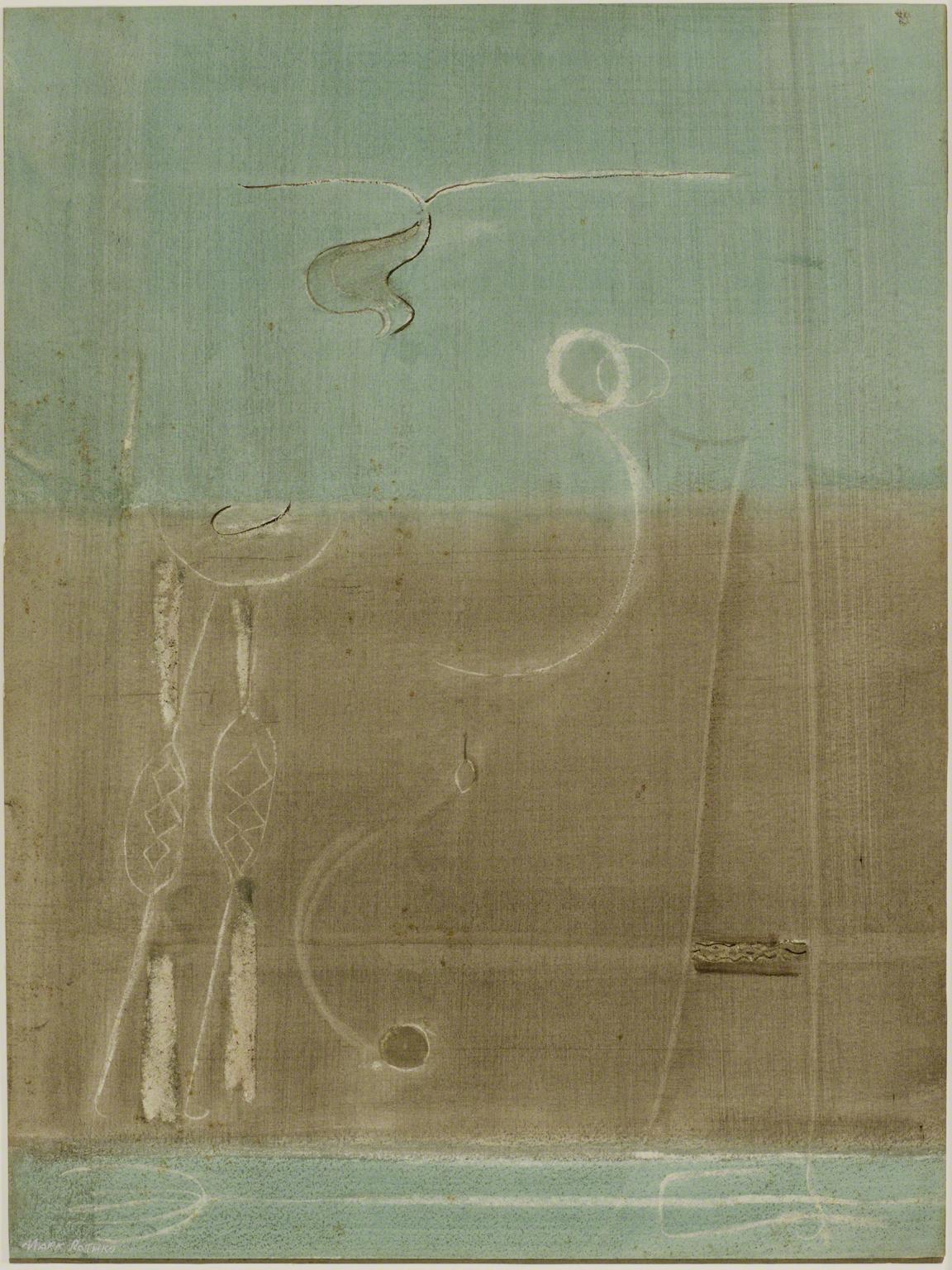Aubade
Mark Rothko ( 1944 )

I am in my studio in Oaxaca, Mexico, at Casa Wabi, quarantining myself amid the Coronavirus outbreak. During these worrisome times, in which the art world is becoming feeble, I have been reflecting on this beautiful painting.
Throughout time I have been convinced that one of the reasons I fell in love with the art world is because of the works of Mark Rothko. For me, this somber piece is without a doubt one of his most extraordinary works of art. Aubade reflects the troublesome circumstances of the world, as it was created in 1944 toward the end of World War II. The work invokes the existential battle of the current generation in an extremely complicated era. Simultaneously, in the rawness of the moment, the technique becomes similar to Arte Povera. It is a sort of collage on paper, utilizing basic elements and accidents created by the paper itself. Little by little, it separates itself from the representation and clearly exposes marks of what will be in the future the characteristic way of painting of Rothko. The transparencies, the rectangle as a pictorial object, morph into one exterior of reality. A new everything. In this new everything, in which color unquestionably dominates as the protagonist, a certain sensation is created, a distinctive phenomenon in which the piece becomes a single structure of color. This object which floats on the wall seems to separate itself from any restrictions, as if it were about to fly off at any moment.
The more I understand and familiarize myself with the works of Rothko, the more I begin to realize that he was not only important for abstract expressionism but also for other current movements such as American minimalism—this is evident in the works of Robert Irwin, Dan Flavin, and even Donald Judd. It is also evident in a great number of artists like Gerhard Richter, Richard Serra, and James Turrell, among others. Obviously, and without placing myself at the level of the artists named, Rothko has been an immense influence on my art. Donald Judd said it best when he intimated that Rothko had achieved nothing less than the creation of “a new reality and a new wholeness.”[1]
1 Donald Judd, Complete Writings (Eindhoven: Van Abbemuseum, 1987), 42.
Text by Bosco Sodi, adapted from Seeing Differently: The Phillips Collects for a New Century (The Phillips Collection in association with Giles, 2021)